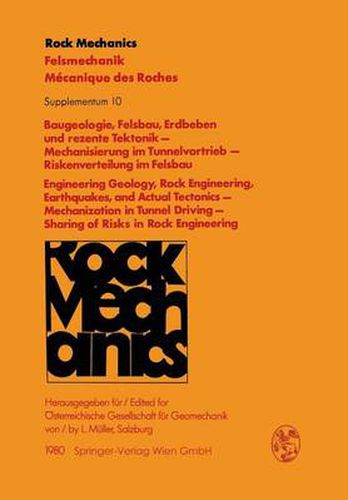Readings Newsletter
Become a Readings Member to make your shopping experience even easier.
Sign in or sign up for free!
You’re not far away from qualifying for FREE standard shipping within Australia
You’ve qualified for FREE standard shipping within Australia
The cart is loading…






This title is printed to order. This book may have been self-published. If so, we cannot guarantee the quality of the content. In the main most books will have gone through the editing process however some may not. We therefore suggest that you be aware of this before ordering this book. If in doubt check either the author or publisher’s details as we are unable to accept any returns unless they are faulty. Please contact us if you have any questions.
First of all I want to make clear that what I am going toset forth does ab- solutely not pretend tobe a strictly technical treatment of the topic. It is neither an accurate analysis of the relationships of neotectonics with technical geology, nor with rock or soil mechanics. I simply intend to introduce a problern whose importance, even in the applied field, cannot be neglected for two main reasons. First, when adequately known, it allows the interpretation and explanation of processes less than clear; second, it may help to prevent some types of damages and land misuse. Introduction Since a few years the press of popular science, even when not specialized, has published several eye-catching pictures of roads whose course has been brusquely interrupted, of displaced tree rows, of truncated water courses, of collapsed coast stretches, and so on, cspecially on the occasion of major seismic events (California, Alaska, Japan, Crnagora, Friuli, ...). The latter are among the most visible signs of the occurrence, or of the con- sequencc, of active movcments at the earth's surface. Such movements are related to faults which either are still nowadays or actually are originating today.
$9.00 standard shipping within Australia
FREE standard shipping within Australia for orders over $100.00
Express & International shipping calculated at checkout
This title is printed to order. This book may have been self-published. If so, we cannot guarantee the quality of the content. In the main most books will have gone through the editing process however some may not. We therefore suggest that you be aware of this before ordering this book. If in doubt check either the author or publisher’s details as we are unable to accept any returns unless they are faulty. Please contact us if you have any questions.
First of all I want to make clear that what I am going toset forth does ab- solutely not pretend tobe a strictly technical treatment of the topic. It is neither an accurate analysis of the relationships of neotectonics with technical geology, nor with rock or soil mechanics. I simply intend to introduce a problern whose importance, even in the applied field, cannot be neglected for two main reasons. First, when adequately known, it allows the interpretation and explanation of processes less than clear; second, it may help to prevent some types of damages and land misuse. Introduction Since a few years the press of popular science, even when not specialized, has published several eye-catching pictures of roads whose course has been brusquely interrupted, of displaced tree rows, of truncated water courses, of collapsed coast stretches, and so on, cspecially on the occasion of major seismic events (California, Alaska, Japan, Crnagora, Friuli, ...). The latter are among the most visible signs of the occurrence, or of the con- sequencc, of active movcments at the earth's surface. Such movements are related to faults which either are still nowadays or actually are originating today.